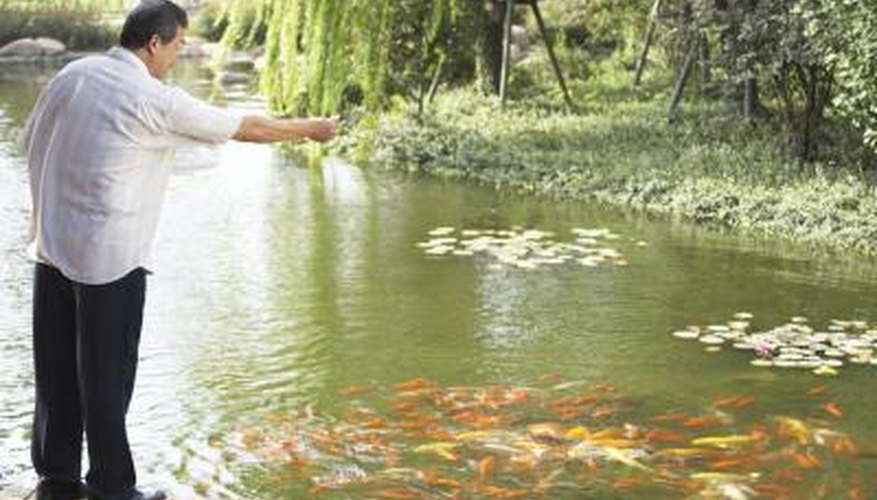Owning property with a pond can be an aesthetically pleasing experience. Adding pond fish can contribute to the personality and aesthetic value of your pond. Pond fish can live in a variety of conditions and temperatures, needing only food and the proper filtration and oxygenation. When you're choosing the type of fish to add to your pond, it is important to know the differences between koi, and shubunkin, to help you determine which fish is right for you.
Basics
Although koi and shubunkin can live in the same pond environment and in some cases look very similar, they are different species of fish. Koi come from Japan. Similar to dogs, koi have been bred for centuries to emphasise certain traits and characteristics. There are many different types of koi fish, including Japanese, domestic and butterfly koi. On the other hand, shubunkin are from China. They are very similar to the common goldfish. They are a hardy fish, much more so than koi, which can be sensitive and susceptible to fish stress. Shubunkin are also referred to as the poor man's koi.
- Although koi and shubunkin can live in the same pond environment and in some cases look very similar, they are different species of fish.
- They are a hardy fish, much more so than koi, which can be sensitive and susceptible to fish stress.
Size
Shubunkin are smaller than koi, making them a better choice for smaller pond environments. Shubunkin can also be raised in an aquarium. They require at least 810 litres (180 gallons). Shubunkin grow according to their surroundings, and are typically 30 to 50 cm (12 to 20 inches) in length. Koi grow much bigger. They require 4,500 litres (1,000 gallons) or more, as they can grow up to 90 cm (36 inches) in length. Because of their size, koi will consume more food than shubunkin, making feeding more expensive.
- Shubunkin are smaller than koi, making them a better choice for smaller pond environments.
- Shubunkin grow according to their surroundings, and are typically 30 to 50 cm (12 to 20 inches) in length.
Lifespan
The typical lifespan of a shubunkin fish is up to 15 years, whereas the lifespan of a koi fish can be 25 to 35 years. However, koi, in some cases, can live much longer, even living for many decades. The oldest koi fish on record was reportedly 226 years old. She was a scarlet koi named Hanako. "Her age was determined by removing one of her scales and examining it extensively in 1966," according to H2ODesignsInc.com.
- The typical lifespan of a shubunkin fish is up to 15 years, whereas the lifespan of a koi fish can be 25 to 35 years.
- Her age was determined by removing one of her scales and examining it extensively in 1966," according to H2ODesignsInc.com.
Other physical differences
Similar to a catfish, a koi will have whiskers at the side of its face, while a shubunkin has a blunt, rounded nose. Shubunkin are pearly in colour, also known as calico. They have a mixture of metallic and translucent scales and can be red, white, grey and black with speckles. They can also be blue, purple, pink, yellow or orange. Koi, on the other hand, have many different patterns and colours, which they are often named for. For example, sanke koi are white with red and black splotches, while bekko koi are one solid colour with black spots.
- Similar to a catfish, a koi will have whiskers at the side of its face, while a shubunkin has a blunt, rounded nose.
- For example, sanke koi are white with red and black splotches, while bekko koi are one solid colour with black spots.
